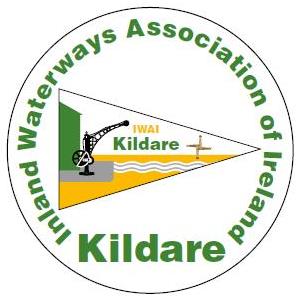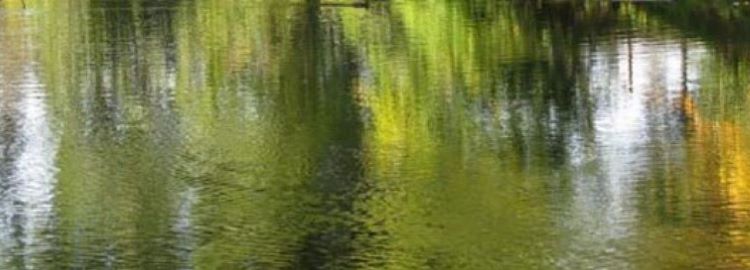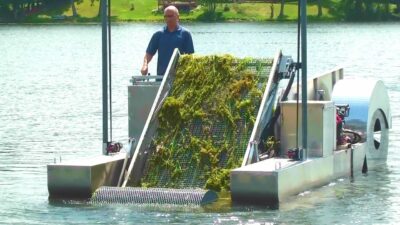Nuttall’s Waterweed and New Zealand Pigmyweed are two invasive plants that are alive, thriving and clogging up our canals.
These plants are rampant in Sallins and with other invasive plants they can be seen in many places on the Grand, Naas and Royal Canals in Kildare. From a boating perspective they make it very difficult to move from May to September. They block the light needed to ensure our native plants and fish thrive. Add to this a fall in water levels and the result is a dismal boating and fishing environment.
Many of these plants thrive in warm conditions and die down in October, when the first frosts occur. This also has a detrimental effect on the water levels as they add to the silt at the bottom of the canal. Once spring is here they grow back stronger then before; removing a metre or so with a weed cutters, ensures many new plants will grow during the summer from the cuttings left behind. They have taken over!
Nuttall’s Waterweed (Elodea nuttallii)
This plant has been recorded 99 times on the Biodiversity Ireland database.
www.plantlife.org.uk state:
They grow faster and outcompete most native species and so reduce the biodiversity of waterways. Although they are sold for their ‘oxygenating’ quality, they can cause big fluctuations in the amount of oxygen available in the water and this can be harmful to invertebrates and fish. In slow flowing rivers, drainage channels and canals, their dense growth often impedes flow and exacerbates flooding.
This species is listed on Schedule 9 of the Wildlife and Countryside Act in England and Wales therefore, it is also an offence to plant or otherwise cause to grow this species in the wild.
www.invasivespeciesireland.com state:
Elodea nuttallii tends to dominate native macrophyte communities which may lead to their local extinction. Impacts have also been recorded on invertebrate communities. This species may also have a significant impact on protected sites. E. nuttallii is also known to replace other invasive species as the dominant species in an impacted ecosystem. More recently data from Britain suggests that this species is now becoming replaced by Largarosiphon major. (Ed. Elodea Nuttalli and Elodea Candensis look similar, both are invasive)
New Zealand Pigmyweed (Crassula helmsii)
This plant has been recorded 57 times on the Biodiversity Ireland database. It was reported growing in the Grand Canal at Lullymore in 2011 and then eradicated by Inland Fisheries Ireland (IFI) and Waterways Ireland (WI) in 2012. [Ed. there have been sightings of this plant in other areas on the Grand in 2021]
www.plantlife.org.uk state:
New Zealand Pigmyweed was banned from sale in April 2014. It was very widely available from nurseries and garden centres, being sold as an excellent oxygenator. In slow-moving water such as ponds, lakes and canals it forms a dense, tangled growth of stems underwater, sometimes billowing up in cushions on the water surface.
This plant can re-grow from the tiniest fragments. It lives in a variety of habitats, from three-metre-deep waterways to damp ground out of water. The weed can play havoc along our canals and rivers. It forms a dense mat on the surface that blocks out light and oxygen, killing anything living beneath it and blocking navigation. It is practically impossible to eradicate, with some suggesting the best way to control it is to fill in the waterways where it is found and dig new ones!
www.invasivespeciesireland.com state:
New Zealand Pigmyweed (crassula helmsii) is suited to a wide range of environmental tolerances and is well adapted to Irish conditions. Most slow-moving freshwater systems are believed to be susceptible to invasion by C. helmsii. It forms dense carpets of monospecific vegetation and out competes native species, choking ponds and ditches.
It is believed that this plant got to Ireland via trade for garden ponds. It is possible that the species was disposed of or escaped into the wild from private gardens. Secondary spread by animals and human activity from an infested site to new sites may occur.
Canal River Trust list this plant under their Rogue’s Gallery of invasive plants:
….. can re-grow from the tiniest fragments. It lives in a variety of habitats, from three-metre-deep waterways to damp ground out of water. It’s quite common around the edges of some of our reservoirs.
The weed has the potential to cause absolute havoc along our canals and rivers. It forms a dense mat over the water’s surface that blocks out light and oxygen, killing anything living beneath it and blocking navigation.
Especes Exotiques list different methods that have been tried to manage invasive species in France, the Netherlands and elsewhere.
Conclusion
Best way? Remove the complete plant and ensure there are no small or large pieces left behind.
Can this Weed Puller work in a canal environment? Is using a Weed Puller instead of a Weed Cutter the way to go?
……………………………………………………….
Biodiversity Ireland is a national organisation for the collection, collation, management, analysis and dissemination of data on Ireland’s biological diversity.
They also track invasive species, including the location of aquatic invasive plants like New Zealand Pigmy weed (Crassula helmsii) Curly waterweed (Lagarosiphon Major) and Nuttall’s waterweed (Elodea Nuttallii).
“Biodiversity data are a key requirement for understanding our natural surroundings, for tracking change in our environment and for gaining a greater insight on how we benefit from, and impact upon, the ecosystem goods and services provided by biological diversity; a national asset which contributes at least €2.6 billion to the Irish economy each year. The Data Centre was established by the Heritage Council in 2007 and is funded by the Heritage Council and the Department of Culture, Heritage and the Gaeltacht.”
During 2018 and 2019 boaters have recorded large swathes of Coon’s Tail or Hornwort (Cerotophyllum demersum) in the canals. The descriptions available state this plant is sold to discourage growth of native weed in garden ponds. It appears to be spreading rapidly in the wild, as it was considered ‘rare’ in Ireland in 2007. During cold weather, it will sink to find warmer water but does not die. It likes still water between 15c and 30c and spreads when cut. In other words, the Grand and Royal canals are its ideal habitat. Currently, it is not deemed invasive in Ireland.
This plant is one of the most problematic to boaters, as it wraps around the shaft behind the propellor, slowing down the boat, eventually stopping it and sometimes damaging it. It is impossible to kick off by going astern, as the stems are long and it wraps tightly, like a rope. Also recorded during 2018 and 2019 is a variety of Eelgrass, growing along the Grand and Royal Canals. As with Coon’s Tail, Eelgrass is growing in large swathes.
Work continues on identifying the weeds spreading along the canal and preventing boat passage especially during the warmer months. Sightings on Kildare Canals can be recorded on the Nav-Watch system and at Biodiversity Ireland.


